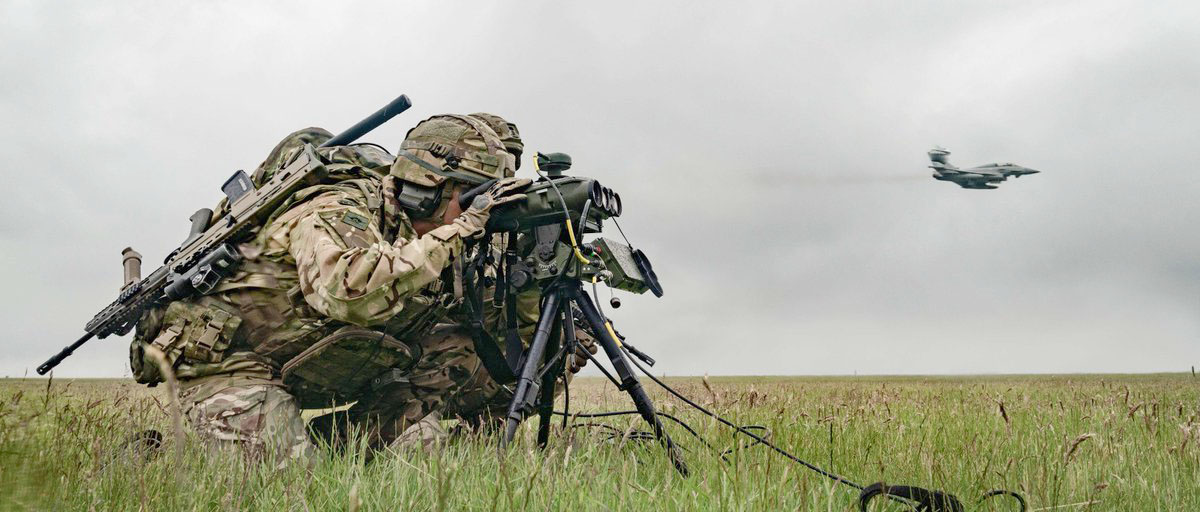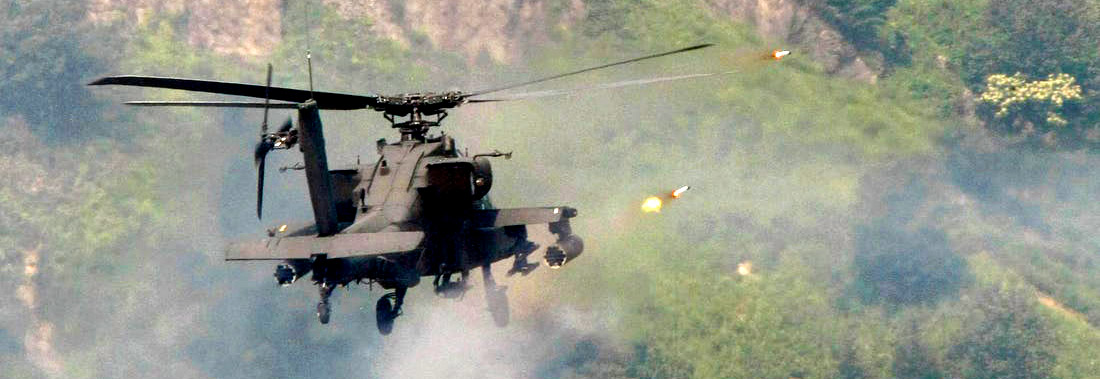Difference between revisions of "JTAC-Aircraft CAS procedures"
Views
Actions
Namespaces
Variants
Tools
Jester2138 (talk | contribs) |
Jester2138 (talk | contribs) |
||
| (7 intermediate revisions by the same user not shown) | |||
| Line 9: | Line 9: | ||
**Tally: I see something I know is enemy e.g. "Tally, technical at the intersection." | **Tally: I see something I know is enemy e.g. "Tally, technical at the intersection." | ||
**No joy: I do not see the enemy, opposite of tally | **No joy: I do not see the enemy, opposite of tally | ||
**Contact: I see a target | **Contact: I see a visual reference that is not the target, e.g. "Contact, three-way intersection north of FOB Haters." | ||
**Cleared hot: You are authorized to release weapons for this attack pass. | **Cleared hot: You are authorized to release weapons for this attack pass. | ||
**Cleared to engage: You are authorized to perform attacks as you wish within parameters I've given you. | **Cleared to engage: You are authorized to perform attacks as you wish within parameters I've given you. | ||
| Line 21: | Line 21: | ||
[[File:jtac3.jpg|border|alt=Alt|An example Landing Zone plan, with helicopter movement marked in black.]] | [[File:jtac3.jpg|border|alt=Alt|An example Landing Zone plan, with helicopter movement marked in black.]] | ||
''' | ''' SCRIPTED EXAMPLES: ''' | ||
'''Example of the typical modern NATO CAS employment using type one with no talk-on based on real-world techniques but greatly simplified for Arma.''' | |||
Aircraft: “Sniper” | Aircraft: “Sniper” | ||
| Line 27: | Line 29: | ||
JTAC: “Yankee” | JTAC: “Yankee” | ||
JTAC has decided he needs CAS on a particular target. He first establishes communication with the aircraft and cues them to get ready to listen to a longer transmission. | |||
JTAC: ''Sniper, Yankee, advise when ready-to-copy strike.'' | JTAC: ''Sniper, Yankee, advise when ready-to-copy strike.'' | ||
| Line 33: | Line 35: | ||
Aircraft: ''Yankee, Sniper, go ahead.'' | Aircraft: ''Yankee, Sniper, go ahead.'' | ||
JTAC gives full transmission of 1) target location 2) target description 3) general location of nearest friendlies 4) type of weapon requested, then asks the aircraft to confirm he understood the target. | |||
JTAC: '' | JTAC: ''Target is on the northwest side of town Reallybad, marked with red smoke. Target is a squad-size group of infantry with a technical moving across a large field. Friendlies are 700 meters to the south of the target. Requesting rockets. Readback target.'' | ||
Aircraft: ''Target is marked by red smoke on the northwest side of town Reallybad. Attacking with rockets.'' | Aircraft: ''Target is marked by red smoke on the northwest side of town Reallybad. Attacking with rockets.'' | ||
| Line 41: | Line 43: | ||
JTAC: ''Readback is correct.'' | JTAC: ''Readback is correct.'' | ||
Aircraft looks for target or marking and calls “tally” if he sees the actual target and “contact” if he sees the marking method. In this case, he likely sees the red smoke well before seeing the actual target, and the use of the word “contact” instead of “tally” tells the JTAC exactly what he's seeing. “Visual” is reserve only for friendlies. | |||
Aircraft: ''Contact.'' | Aircraft: ''Contact red smoke.'' | ||
Aircraft repositions if necessary and begins attack run. He makes the “in” call which also tells the JTAC he is ready for weapons release and where he is coming from. | |||
Aircraft: ''In from the south.'' | Aircraft: ''In from the south.'' | ||
JTAC visually confirms aircraft nose-position before clearing hot. | |||
JTAC: ''Cleared hot.'' | JTAC: ''Cleared hot.'' | ||
Aircraft weapons release. | |||
JTAC: [Battle Damage Assessment, adjusting of fire, etc.] | JTAC: [Battle Damage Assessment, adjusting of fire, etc.] | ||
'''Example using talk-on:''' | |||
JTAC starts with a really, really obvious visual feature that can't possibly be mistaken for something else and guides the pilot to the target step-by-step. | |||
JTAC: Yankee, advise when ready for talk-on. | |||
Aircraft: Sniper, Yankee, go ahead. | |||
JTAC: Yankee, call contact mosque in Reallybad. | |||
Aircraft: Contact mosque. | |||
JTAC: Call contact north/south ASR adjacent to mosque. | |||
Aircraft: Contact ASR. | |||
JTAC: Follow the road north for about 500 meters and call contact first large green field on the West side of the ASR. | |||
Aircraft: Contact field. | |||
JTAC: Call tally vehicle in field. | |||
Aircraft: Tally vehicle! | |||
JTAC: That vehicle is your target. Dispersed infantry nearby. Attack with rockets. Call in. | |||
Aircraft: Copy rockets. | |||
Aircraft positions for attack... | |||
Aircraft: In from the south! | |||
JTAC: Cleared hot. | |||
Kaboom | |||
JTAC: Good hits, looks like the vehicle is destroyed. | |||
Latest revision as of 04:29, 23 November 2021
KEY CONCEPTS:
- What is CAS: Close Air Support refers to the usage of air attack on enemy forces that are in close proximity to friendly forces. It does not mean the aircraft is close, it means the weapons are landing close. CAS has specific procedures that NATO forces use to ensure the safe execution of the attacks and limitation of collateral damage and fratricide. Attacks on enemy forces that are far away from friendlies and do not require close coordination to prevent fratricide use a different set of procedures called Air Interdiction, which is outside the scope of this article.
- What is a JTAC: Joint-Terminal Attack Controller is a term used by NATO forces to refer to a specially-trained individual who is qualified to authorize weapons release from aircraft in close proximity to friendly forces, i.e. CAS. There have been dozens of variations on this concept since WWII, but the general ideas have remained pretty similar. FAC, FAC-A, TACP, JFO, and ANGLICO are all terms used that have been used to describe people doing basically this same thing. Generally, JTAC is a qualification, not a MOS, so almost everyone who is a JTAC has another term they may be using depending on context. Speaking of terms...
- Words: Using certain keywords allows you to transmit more information at once. These words are very important and you should not mix them up under any circumstances, as their whole point is meaning something very specific and distinct from one another.
- Visual: I see something I know is friendly e.g. "Visual, Alpha."
- Tally: I see something I know is enemy e.g. "Tally, technical at the intersection."
- No joy: I do not see the enemy, opposite of tally
- Contact: I see a visual reference that is not the target, e.g. "Contact, three-way intersection north of FOB Haters."
- Cleared hot: You are authorized to release weapons for this attack pass.
- Cleared to engage: You are authorized to perform attacks as you wish within parameters I've given you.
- Abort: Stop all attacks immediately.
- JTAC is the only one who says the words "cleared" and "hot." The aircraft should never ask, for example, "Am I cleared hot?" Imagine what happens if another aircraft on the net hears only the last two words - or any number of other possible scenarios. Those words should only exist on the radio when they are being used by the JTAC to clear imminent weapons release on an aircraft. Of course, when you're dealing with a JTAC who may not know what he is doing, a little prompting might be necessary in the world of Arma...
- Types of CAS: In the real world, there are three types of CAS, and the JTAC always tells the aircraft which type an attack will be under:
- Type 1 CAS requires "cleared hot" for every single attack pass. In Type 1 CAS, the JTAC is both visual and tally, i.e. he sees both the attacking aircraft and the target at the same time and will directly confirm the nose-direction of the aircraft as being on-target before calling "cleared hot" for every single attack pass. Because of this visual confirmation of parameters, Type 1 CAS can be used in the most risky situations (e.g. danger close).
- Type 2 CAS also requires "cleared hot" for every single attack pass. In Type 2 CAS, the JTAC is visual or tally but not both, and different language is used to signify this and provide extra detail and clarification on exactly where the target is and what the means of attack are. For example, GPS-guided bombs through a weather layer, or a rocket run on a target the JTAC can't actually see.
- Type 3 CAS does NOT require clearance for every attack pass. In Type 3 CAS, the JTAC provides clearance for multiple attack passes at once, and will use "cleared to engage" instead of "cleared hot" to signify multiple attack passes are permitted without specific clearance.
SCRIPTED EXAMPLES:
Example of the typical modern NATO CAS employment using type one with no talk-on based on real-world techniques but greatly simplified for Arma.
Aircraft: “Sniper”
JTAC: “Yankee”
JTAC has decided he needs CAS on a particular target. He first establishes communication with the aircraft and cues them to get ready to listen to a longer transmission.
JTAC: Sniper, Yankee, advise when ready-to-copy strike.
Aircraft: Yankee, Sniper, go ahead.
JTAC gives full transmission of 1) target location 2) target description 3) general location of nearest friendlies 4) type of weapon requested, then asks the aircraft to confirm he understood the target.
JTAC: Target is on the northwest side of town Reallybad, marked with red smoke. Target is a squad-size group of infantry with a technical moving across a large field. Friendlies are 700 meters to the south of the target. Requesting rockets. Readback target.
Aircraft: Target is marked by red smoke on the northwest side of town Reallybad. Attacking with rockets.
JTAC: Readback is correct.
Aircraft looks for target or marking and calls “tally” if he sees the actual target and “contact” if he sees the marking method. In this case, he likely sees the red smoke well before seeing the actual target, and the use of the word “contact” instead of “tally” tells the JTAC exactly what he's seeing. “Visual” is reserve only for friendlies.
Aircraft: Contact red smoke.
Aircraft repositions if necessary and begins attack run. He makes the “in” call which also tells the JTAC he is ready for weapons release and where he is coming from.
Aircraft: In from the south.
JTAC visually confirms aircraft nose-position before clearing hot.
JTAC: Cleared hot.
Aircraft weapons release.
JTAC: [Battle Damage Assessment, adjusting of fire, etc.]
Example using talk-on:
JTAC starts with a really, really obvious visual feature that can't possibly be mistaken for something else and guides the pilot to the target step-by-step.
JTAC: Yankee, advise when ready for talk-on.
Aircraft: Sniper, Yankee, go ahead.
JTAC: Yankee, call contact mosque in Reallybad.
Aircraft: Contact mosque.
JTAC: Call contact north/south ASR adjacent to mosque.
Aircraft: Contact ASR.
JTAC: Follow the road north for about 500 meters and call contact first large green field on the West side of the ASR.
Aircraft: Contact field.
JTAC: Call tally vehicle in field.
Aircraft: Tally vehicle!
JTAC: That vehicle is your target. Dispersed infantry nearby. Attack with rockets. Call in.
Aircraft: Copy rockets.
Aircraft positions for attack...
Aircraft: In from the south!
JTAC: Cleared hot.
Kaboom
JTAC: Good hits, looks like the vehicle is destroyed.

